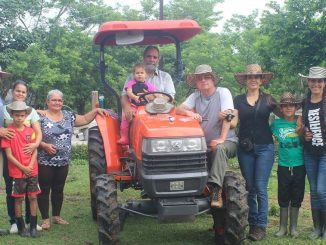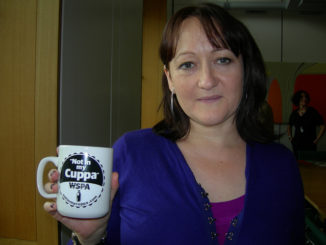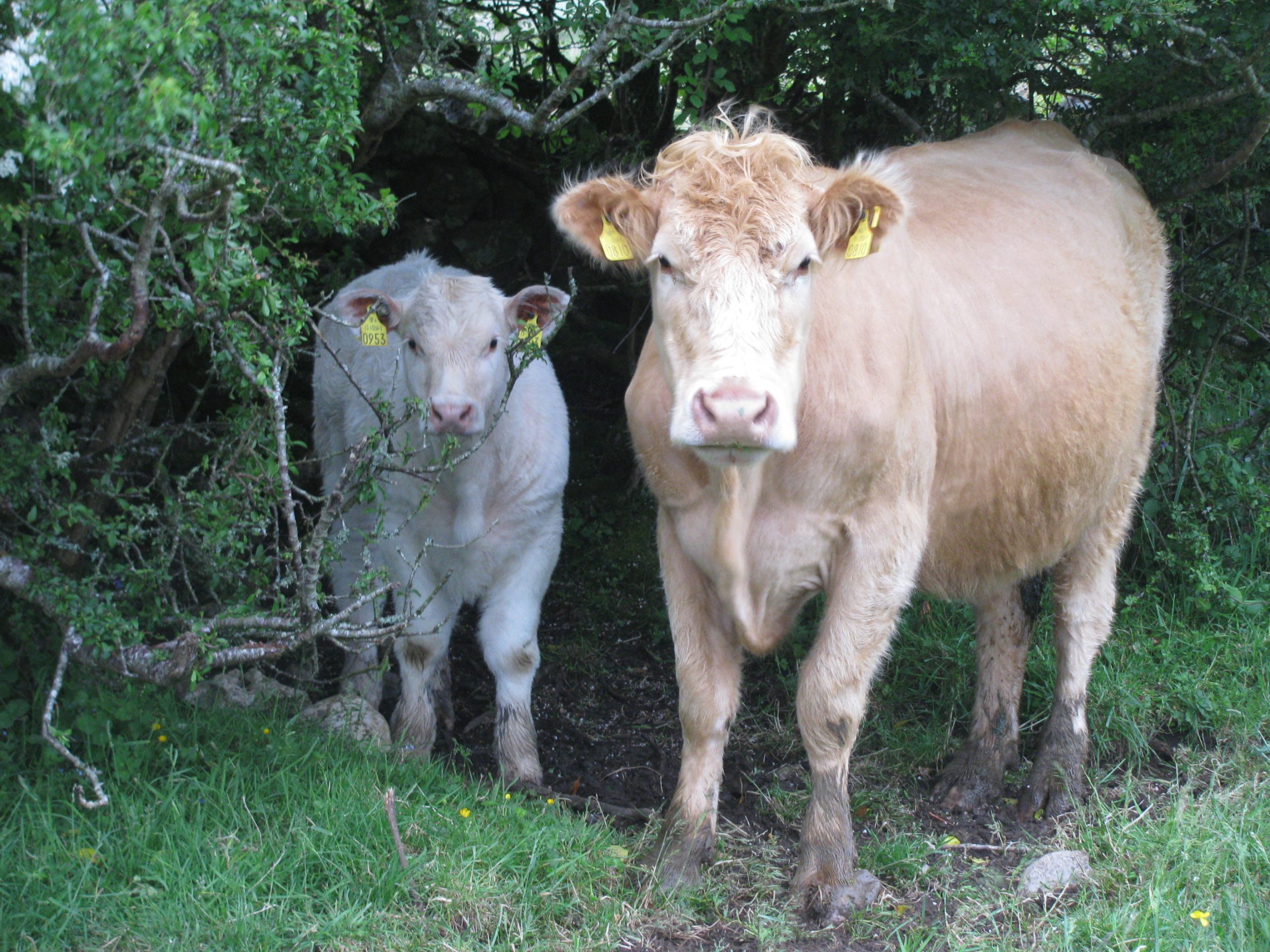
We’re back on Shane Casey’s farm in the Burren, Ireland. Here, with the harvest in full swing, lambs and weanlings are being sold. In an ideal world Shane would like his meat to be consumed locally. In reality, in rural areas like his, supply outstrips demand. Shane prides himself on the quality of his meat. Working backwards from butchery to husbandry to breeding, he shares some insights into the process.
In the Irish language, September is known as Meán Fómhair, or ‘middle of the harvest’, and that’s where we are at on our farm at the moment.
The strongest ram lambs have already been sold to farmers producing pedigree and early lambs. The younger ones will go in early October for farmers producing mid-season lambs, and whatever is left, usually just a handful of the youngest lambs, will be kept on, and sold as year and a half’s next summer.
Similarly, our strongest weanlings will be going to the mart. Our local mart in Kilfenora has always had a big September show and sale, with the remainder of our weanlings normally going on the October Bank Holiday (the last Monday in October – coincidentally, October in the Irish language is Deireadh Fómhair, or ‘end of the harvest’).
My father was heavily involved in developing the mart at Kilfenora, and its importance to the local Burren farming community cannot be overstated, with a reputation that goes well beyond the limestone landscape, bolstered by a promise to buyers of high-quality limestone cattle, drawing interest from far and wide.
Our weanlings leave our farm at around six months old, but won’t enter the food chain for at least another 12 months, and so much can happen during that period. Some will be bought locally and kept on a single farm until they are finished. Then sold to local craft butchers, who in turn sell to local consumers.
The result is high quality meat with a low carbon footprint. But of course, supply outstrips demand in rural areas like north Clare, and this ideal scenario represents the exception rather than the norm.
That raises an important question – how do you ensure high quality meat, but keep its carbon footprint low? I’ll come back to the latter in a future letter, but will touch on the former now.
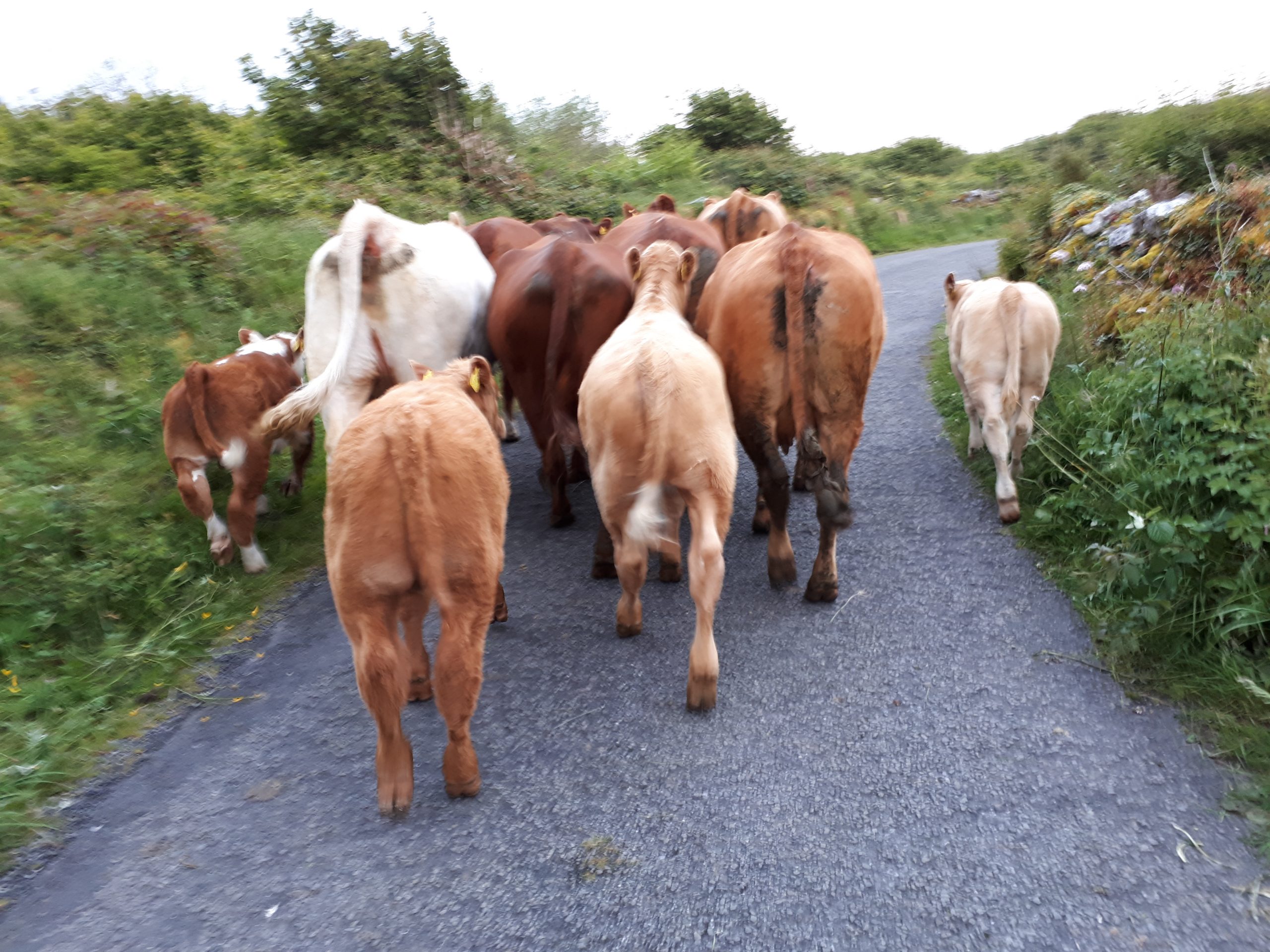
An ounce of breeding is worth a tonne of feeding
Working backwards, the quality of the meat on your dinner plate will depend on the skill of the chef. The handling prior to slaughter, skill of the butcher, hanging time, storage, and the time between kill and consumption also hugely influences the quality of the meat. The diet and husbandry throughout its lifetime play another important role, as does the breed and quality of the animal – to bring it back to the beginning where our farm has a role.
Our father always believed that an ounce of breeding was worth a tonne of feeding. Shorthorns and Herefords were the more traditional breeds on the Burren. They are more mobile on the limestone than many continental breeds, and better at converting rougher vegetation (something I’ll come back to in next month’s letter as it plays an important role in the conservation of the Burren), which earns them a reputation as being hardy. Though it’s not a term I agree with as it can give the impression of sub-standard quality.
In reality, many of the Shorthorns found on the Burren are towards the upper end of the scale for their breed. When crossed with a continental bull, like a Charolais, the hybrid vigour results in a top-quality calf. And in the late 1980’s, my father brought the All-Ireland champion bull home to Blackhead, so no lack of quality there!
More and more, Shorthorn crosses are kept, or bought in as replacements. A Shorthorn-Limousin cow can produce a super calf when crossed with a Charolais bull, while still effectively grazing the Burren landscape. So too can a Shorthorn-Charolais cross, with the added benefit of producing a white calf (white calves can often yield a better price, as they are perceived as finishing with better shape due to more of the Charolais breed in them, than the yellow Shorthorn-Charolais cross calves). However, care needs to be taken not to select an overly muscly replacement as they can have trouble calving or may be poor milkers.
Of course, none of that matters unless you get the calf out of the cow and on the ground, alive and healthy – that’s your first priority. After that, it’s all about the husbandry.
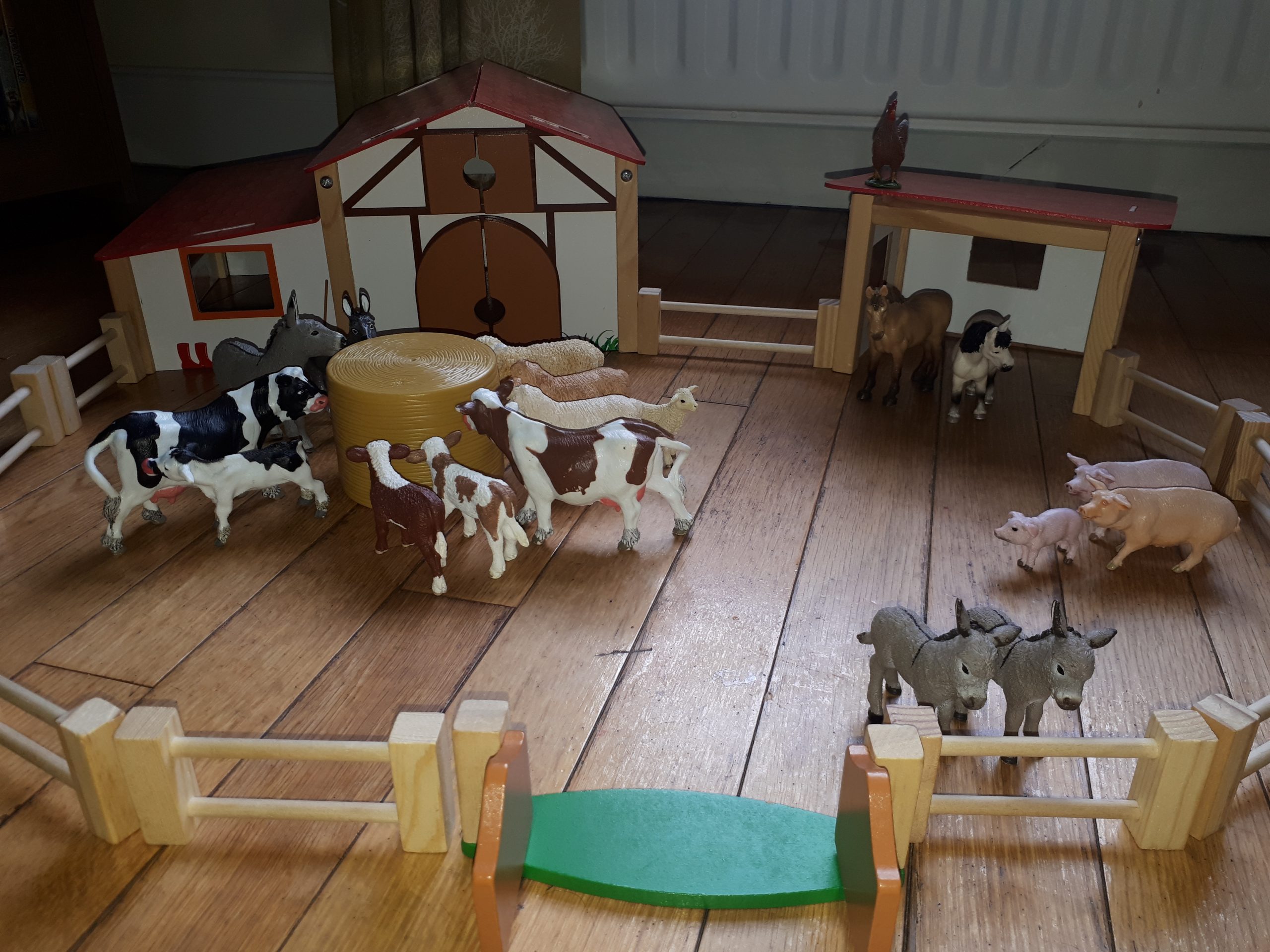
After that, it’s all about the husbandry
Every morning, my three-year-old son checks the cows and calves on his toy farm. He checks the noses of each calf for snozzle (his word), listens to see if they are wheezing, checks that their ears aren’t hanging down, or that they aren’t dirty behind. He checks to see if the cows are lame, or if their udders are sore, or if they look empty (hungry). Then he moves on to check the sheep and horses. Thankfully, his toy animals are always healthy, and hopefully, when he’s older and looking at real livestock, all those checks will become a subconscious part of his herding.
Thankfully the cows and calves are healthy on the real farm as well. We check for all the same signs that something might not be right, but equally, we watch out for the signs that they are – the animals grazing contentedly or basking in the last of the summer sunshine while chewing the cud. We also keep an eye on grass growth, check their water supply, and boundary walls.
What makes our farm a little more challenging than most others is that the calves tend to be a range of ages, and extra vigilance is needed when herding. A cow will ideally calf around the same time every year, and most farmers will aim for them all to calf together. If the cow doesn’t go in calf in the first or second attempt, then a farmer is likely to replace her.
However, historically, we would have had autumn calving cows on the Burren – a chance for some income in the springtime, or a better price for a stronger animal the following autumn. Then, when the Charolais herd was getting started, we had early spring and mid-summer calves in response to agricultural show classes. So, there was often more toleration (within reason) on our farm for a cow that didn’t go in calf straight away, particularly if she had a specific breeding line.
So while others are trying to consolidate their calving time, it hasn’t quite happened for us just yet!
Look out for Shane’s next letter, when he will explain the practice of winterage in the Burren.
More from Ireland
Organics, Agroforestry, Eco-schemes – for a Just Transition in Ireland
Hidden Formulas and Agri-Media – Can we Find a Fair CAP in Ireland?
Letter from a Farm | Starting the Soil Health Journey in Ireland
Letter from a Farm | Saving Carrottop – the Life of a Cow in Mayo
More Letters from the Farm
Letter From The Farm | Rasputin The Ram & The Ethics Of Lamb For Easter Dinner
Letter From The Farm | Freedom, Forgotten Places And The Future Of Farming
Letter From The Farm | Three Years In: Realism And Planning For Utopia
Letter From The Farm | Half The Price Of Your Food Is Paid By The EU




